
It’s arguably Chicago’s most famous street, older than the city itself and celebrated by Frank Sinatra as “State Street, that great street.”
And now after a history with as many peaks and valleys as the Chicago skyline itself, State Street is in line for yet another makeover aimed at making it a hit once again.
State Street is “what many consider Chicago’s front porch,” said Michael Edwards, the president of the Chicago Loop Alliance.
The idea is to make that porch more welcoming to residents and visitors alike.
A new set of recommendations to revamp State Street is focusing on doing just that and highlighting the art, retail and education institutions along the historic stretch.
The ideas from a city-commissioned panel include improving the street’s design to be more friendly to pedestrians and public events, adding art and light displays, encouraging new programs tied to major city cultural happenings and periodically closing the street to vehicle traffic, as is currently done for Sundays on State.
The Chicago Loop Alliance, in partnership with the Urban Land Institute Chicago and the city Department of Planning and Development, organized the panel to develop strategies to revamp the mile stretch of State Street bounded on the north by Wacker Drive and on the south by Ida B. Wells Drive.
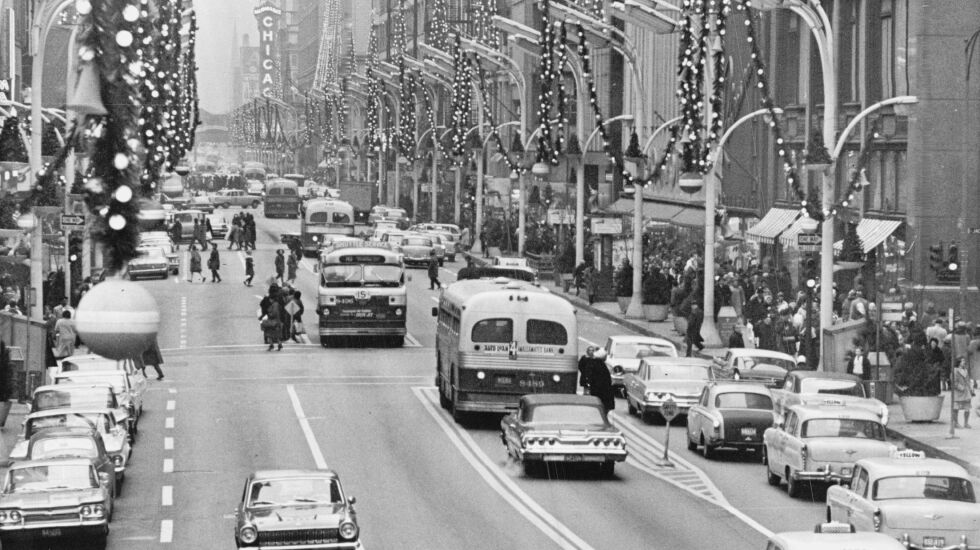
The recommendations were presented Wednesday evening at the Harold Washington Library Center.
“State Street will be reclaimed as Chicago’s great street, tied to the rhythm of the city and its neighborhoods,” panel chair Mark Kelly told those attending the presentation.
Kelly, of Urban Land Institute Chicago, asked audience members to imagine the next time Beyonce or Taylor Swift comes to town. A redesigned State Street with a focus on pedestrians could serve as a fashion runway for the musical superstars.
State Street is “the city’s town square. We have to think like it, we have to act like it, we have to program it and then we have to bring it to life,” Kelly said.
State Street dates to 1831 — six years before Chicago was incorporated as a city — when the state Legislature first authorized it as State Road, according to the Chicago Loop Alliance.
It’s been one of the city’s retail centers long before Macy’s came along. The corner of State Street and Wacker Drive was an outpost during the early 1800s for travelers passing through and heading west, according to the alliance.
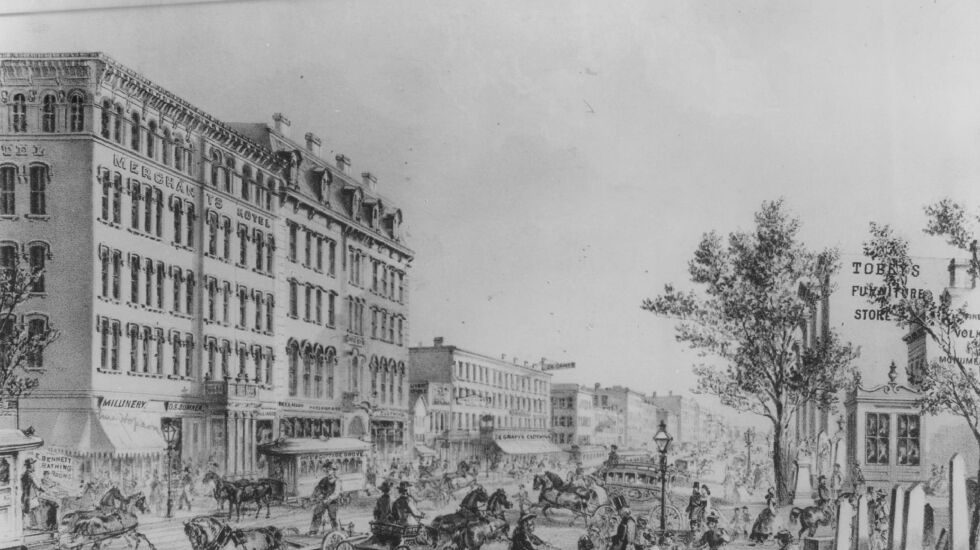
Despite the addition of modern street lamps in 1926, State Street had its problems. The State Street Council continued to call for the removal of “hawkers, beggars and other undesirable characters of like nature” in 1933, according to the Chicago Public Library.
Efforts to help State Street survive and thrive go back decades. Mayor Jane Byrne oversaw the opening of the “State Street Mall” in 1979 as the suburban exodus drew residents away from the city. Only pedestrians and buses were allowed on the street, before it was reopened to traffic 17 years later.
During different mayoral administrations in the 1980s and 1990s, the city developed the “Vision for the Future of Greater State Street,” according to the Chicago Loop Alliance.
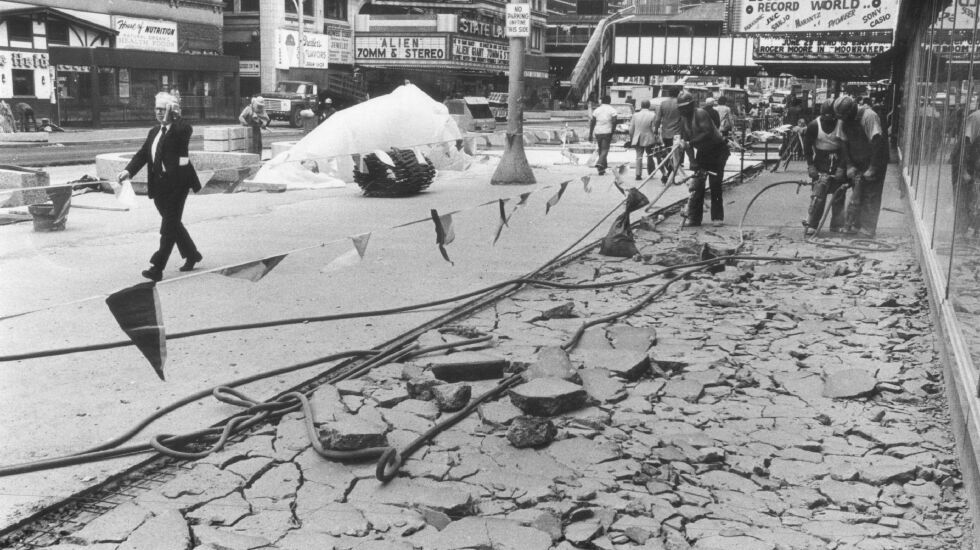
That investment brought in businesses and residential spaces, established the street’s current arts, retail and education sections and served as inspiration for the new plans, Edwards said.
“What we’d like to do is build off the power of that idea,” Edwards said.
The new panel — made up of 12 experts ranging from the worlds of architecture, development, arts and culture, design, retail — also suggested establishing new districts along State Street:
• The northern third of the street would be the North Anchor Arts District, creating a consortium of downtown arts organizations that connect to public events on State Street.
• The Center Anchor Retail District would be dedicated to strengthening businesses and supporting office and residential spaces along the middle third of the street. The panel recommends creating spaces on the street for visitors to sit and dine, working with owners to develop themed retail areas and increasing lighting and decorations for holidays and seasonal events, such as the Macy’s holiday window displays.
• The South Anchor Civic and Educational District would situate the Harold Washington Library as a dedicated community center and incorporate ways “to support collegiate life” in and around State Street.
At Wedneday’s presentation, panel members also spoke in favor of building more affordable housing along State Street and elsewhere downtown, predicting it would lead to more commercial spaces and events.
The panel’s recommendations are designed to attract more people downtown and bring in more investors.
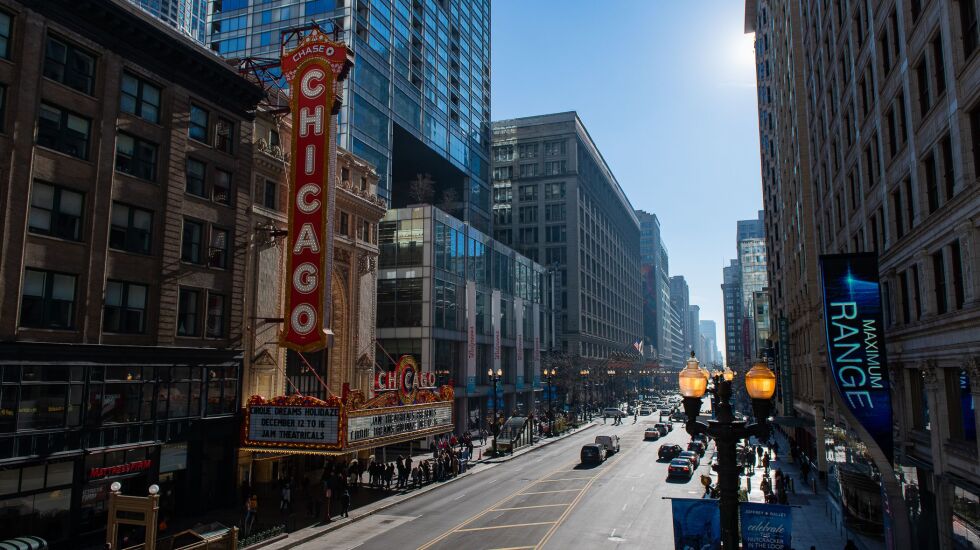
“Right now, State Street is designed for cars, and the planters on the street don’t make it easy for people to stop. You can’t stand in front of Macy’s or you get run over,” Edwards said. “So if we have a bit more room for pedestrians, maybe people would linger longer, there’d be more cafes, more reasons to be on State Street.”
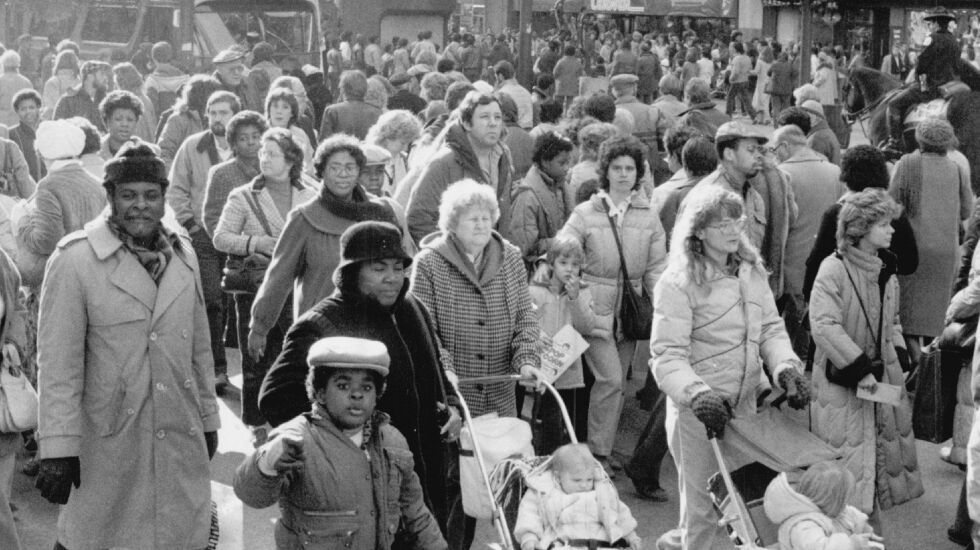
Loop resident George Miller said he’s excited to hear about the revitalization efforts.
“I have been fascinated by State Street since I was a small child coming down with my parents and rubbing elbows with all kinds of people,” said Miller, a former member of a neighborhood group no longer active. “Anything we can do to bring art, culture and people to the center of the city is a good thing.”
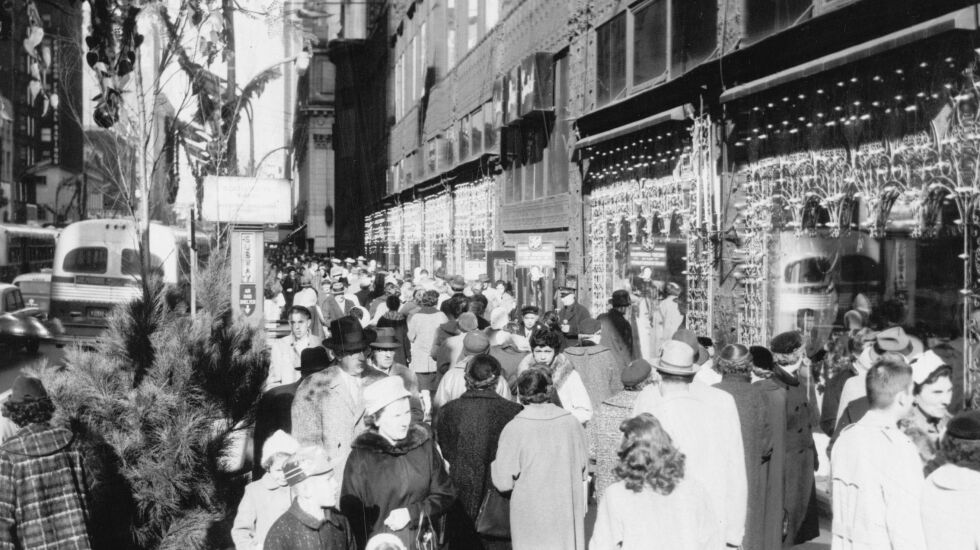
Miller said he hopes future changes encourage more people to visit the street and surrounding Loop.
“This is good and important thing to do, it’s a matter of people having confidence in the Loop,” Miller said. “The street and the Loop has faced many challenges, COVID-related challenges, vacant buildings, retail stores closing.”
After Wednesday’s presentation at the Harold Washington Library, audience members voiced approval for many of the proposals.
“State Street kind of sucks right now,” said Jonathan Rosenzweig, 23, a Ravenswood resident who said he visits the Loop often on the weekends and thinks there’s too much car traffic.
“We need more foot traffic, and we need to figure out what to do with the vacant offices, because that’s just odd and it’s losing a lot of money,” Rosenzweig said. “The economics should definitely be improved. I think residential and special events are a good idea” to increase visitors.
Misha Creager, 37, used to commute downtown to an office building off State Street every day, but she has worked from home since the COVID-19 pandemic. Creager also said some of her favorite spots to eat on State have closed in recent years.
“A lot of my coworkers don’t come in downtown much either,” Creager said. “I miss that excitement and activity that downtown used to bring.”
She thinks the biggest issue now is the number of vacant buildings, but she was interested in some of Wednesday’s proposals.
“But I think there’s lots of potential. Chicago came back from the Great Fire, we’re going to come back from this,” Creager said.







